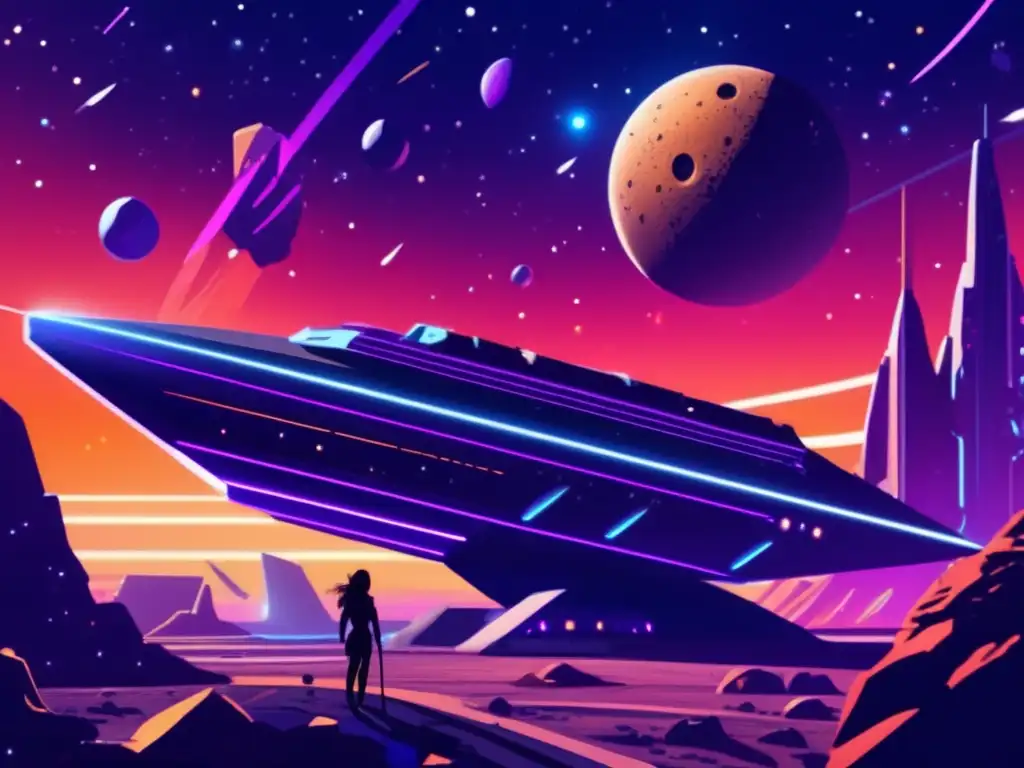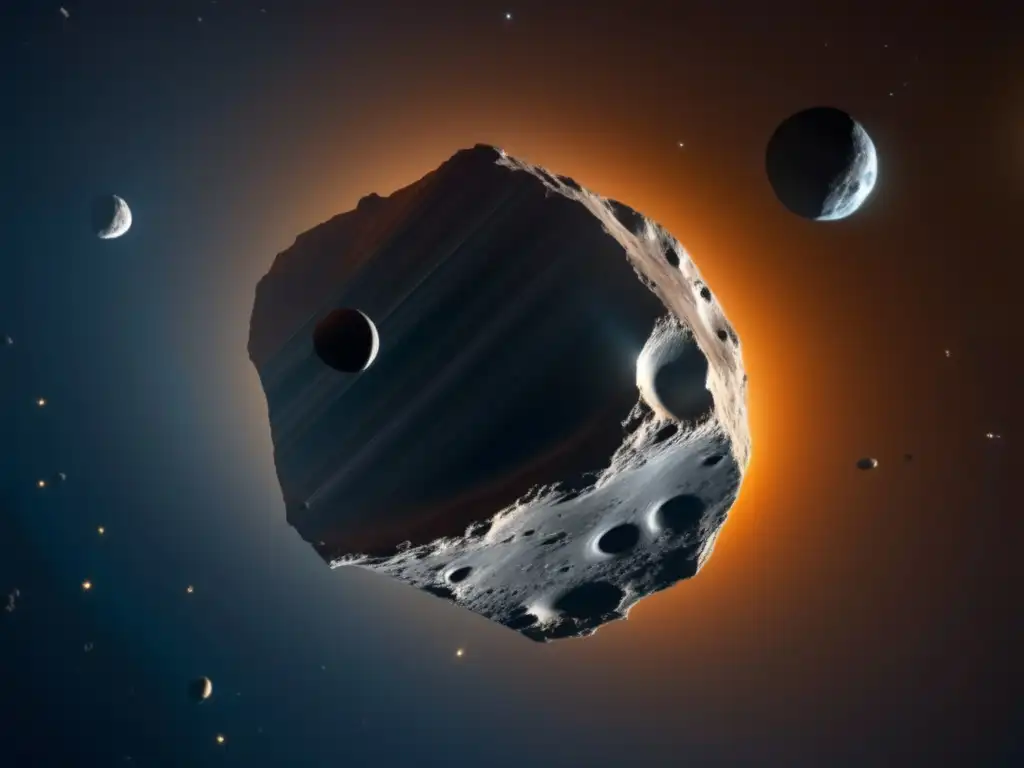"Unlocking Vesta: Hubble’s Insights Into A Young Asteroid"

Introduction
In recent years, the study of asteroids has become increasingly important to understand the formation and evolution of our solar system. One of the most fascinating asteroids is Vesta, which is the second most massive object in the asteroid belt and was visited by NASA's Dawn spacecraft from 2011 to 2012. However, even after the successful mission, scientists continue to study Vesta, and one of the most significant insights has come from the Hubble Space Telescope. In this article, we will explore Hubble's observations of Vesta and what they reveal about the asteroid's history and composition.
The Formation of Vesta

A Proto-planet in the Making
Vesta is thought to be a leftover protoplanet that formed over 4.5 billion years ago during the early days of the solar system. At that time, the gas and dust in the solar nebula began to clump together, forming grains, then pebbles, and finally planetesimals. These planetesimals collided with each other and accumulated more and more material, eventually forming the planets and asteroids we observe today. Vesta's size and composition suggest that it was one of the first bodies to form in the asteroid belt between Mars and Jupiter and represents an excellent opportunity to learn more about the early solar system.
A Violent Past
Despite its age, Vesta has had a turbulent history. Observations from Hubble have revealed a series of large impact craters on its surface, including the Rheasilvia basin, which is approximately 500 km wide and 13 km deep. This impact event likely occurred around 1 billion years ago and was powerful enough to expose the asteroid's interior. The impact also ejected material into space, some of which has landed on Earth in the form of meteorites. By studying these meteorites, scientists can gain insights into Vesta's composition and history.
An Unusual Composition
One of the most surprising findings from the Dawn mission was that Vesta's surface is rich in a type of rock called basalt, which is usually associated with volcanoes. This suggests that Vesta had active volcanism in its past, creating lava flows that solidified into the basaltic crust we observe today. The Hubble observations have confirmed this finding and revealed that Vesta's basaltic crust covers the majority of the asteroid's surface. Moreover, the observations show that there are differences in the composition of the basaltic rocks on Vesta, indicating that the asteroid's mantle is not homogeneous.
The Internal Structure of Vesta

A Dense Core
By combining data from Dawn and Hubble, scientists have been able to build a model of Vesta's internal structure. The model suggests that the asteroid has a differentiated interior, with a dense metallic core, a rocky mantle, and a basaltic crust. The core is estimated to be about 220 km wide and comprises approximately 18% of the asteroid's mass. This indicates that Vesta underwent significant heating during its formation, causing the metal to sink to the center and the rocky material to rise to the surface.
A Young Asteroid
Another surprising finding from the Hubble observations is that Vesta is a relatively young asteroid. By analyzing the distribution of impact craters on its surface, scientists have estimated that Vesta is less than 2 billion years old. This suggests that the asteroid underwent a significant impact event around that time, which would have reset the crater count and erased the evidence of earlier collisions. This interpretation is supported by the presence of dark areas on Vesta's surface, which are thought to be the result of recent impact events exposing fresh material.
A Key to Understanding the Solar System
Vesta's unique properties make it a crucial object for understanding the formation and evolution of the solar system. By studying the asteroid, scientists can gain insights into the processes that led to the formation of planets, the differentiation of their interiors, and the mechanisms that drive volcanism and impact events. Moreover, the study of Vesta can help us understand the origin of meteorites and their relationship to the asteroids from which they came.
Frequently Asked Questions

-
What is Vesta?
Vesta is one of the largest asteroids in the asteroid belt between Mars and Jupiter, with a diameter of approximately 525 km.
-
How old is Vesta?
Based on the distribution of impact craters on its surface, Vesta is estimated to be less than 2 billion years old.
-
What is Vesta's composition?
Vesta's surface is rich in basaltic rock, indicating that the asteroid had active volcanism in its past. Its interior is thought to be differentiated, with a metallic core, a rocky mantle, and a basaltic crust.
-
Why is Vesta important?
Vesta's unique properties make it a crucial object for understanding the formation and evolution of the solar system, including the processes that led to the formation of planets, the differentiation of their interiors, and the mechanisms that drive volcanism and impact events.
-
What insights have Hubble's observations provided about Vesta?
Hubble's observations have confirmed the presence of basaltic rock on Vesta's surface, revealed differences in the composition of the rocks, and helped to build a model of the asteroid's internal structure. The observations also suggest that Vesta is a relatively young asteroid, less than 2 billion years old.
Conclusion
Unlocking the secrets of Vesta is crucial to understanding the formation and evolution of our solar system. By combining data from missions like Dawn and observations from telescopes like Hubble, scientists are gaining unprecedented insights into this fascinating asteroid. The study of Vesta will undoubtedly continue to reveal new information and inspire new questions as we continue to explore the mysteries of our cosmic neighborhood.
Thank you for reading our article on Hubble's insights into Vesta. We encourage you to share your thoughts and ideas in the comments section and to check out the other great content on www.asteroidrealm.com.
Additional Resources

For those interested in learning more about asteroids and the study of the solar system, we recommend the following resources:
- NASA's Asteroid and Comet Watch
- NASA's Overview of Asteroids, Comets, and Meteors
- The Planetary Society's List of Asteroid Missions
 "2008 TC3: The Asteroid Foreseen"
"2008 TC3: The Asteroid Foreseen" "Asteroid Pioneers: The Men And Women Behind The Discoveries"
"Asteroid Pioneers: The Men And Women Behind The Discoveries" "The Unveiling Of 1996 PW: An Unusual Asteroid"
"The Unveiling Of 1996 PW: An Unusual Asteroid"If you want to discover more articles similar to "Unlocking Vesta: Hubble’s Insights Into A Young Asteroid", you can visit the Asteroid Discoveries category.
Leave a Reply

Articulos relacionados: